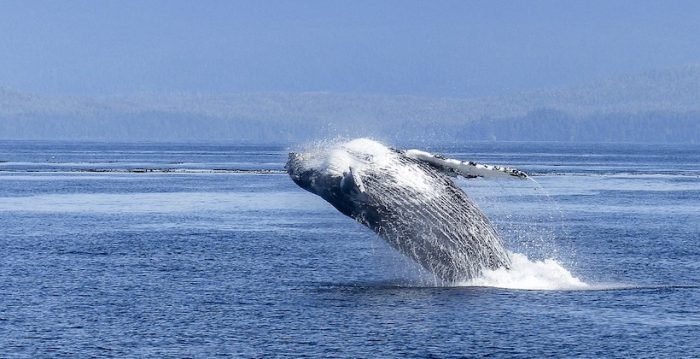
MERI Foundation and the Maritime Government of the City of Castro have allied to reduce deaths from collisions. The document includes other suggestions such as the incorporation of trained lookouts on vessels to identify the different species of cetaceans, the notification of sightings via radio to the Chilean maritime authority and maximum daytime and nighttime speeds of 10 and 8 knots, respectively.
Between October and April the presence of whales increases off the coast of Chile. Cetaceans return to this part of the hemisphere to feed, after spending months reproducing in the northern waters.
The arrival of these mammals creates great expectation along the Chilean coast; however, major threats such as maritime traffic and noise pollution put their lives at risk.
Between 2007 and 2016 more than 1,200 whales in the world have collided with vessels. In Chile, since 2017, four whales have been found dead because of this, an alarming figure considering the world population of this species.
Navigation regulations
To reduce deaths from collisions, in January 2019 MERI Foundation and the Maritime Government of the city of Castro joined forces to draw up the country’s first regulations aimed at regulating navigation in Northern Patagonia.
The document includes other suggestions such as the incorporation of trained lookouts on vessels to identify the different species of cetaceans, the notification of sightings via radio to the Chilean maritime authority and maximum daytime and nighttime speeds of 10 and 8 knots, respectively.
One year after the implementation of this regulation, the initiative expects to be replicated throughout the country, for which MERI Foundation and Directemar are considering agreements and additional courses of action to be implemented.
Among the privileged places to observe these mammals are Chañaral de Aceituno, Gulf of Corcovado and Antofagasta.
Risk factors
One of the main risks for whales is maritime traffic.
90% of the world’s freight is transported across the oceans. Since the 1990s, the number of vessels in this route has quadrupled, as well as their size. Large ships collide with cetaceans, mainly whales, causing them injuries or death.
There are about 87 species of cetaceans in the world. Half of them have been sighted in Chile, making our country a privileged place to study them.
Noise Pollution
Sound is the main means of communication for marine organisms, especially mammals.
The noise pollution generated by ships alters the usual behavior of cetaceans. This noise interferes with the biological sounds emitted by whales to communicate with each other.
In some cases it is so intense that it can cause hearing damage, internal bleeding or disorientation and the stranding and death of the animals.
Source: El Mostrador

